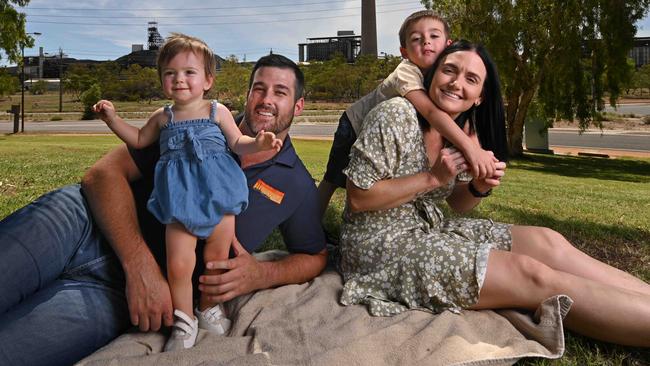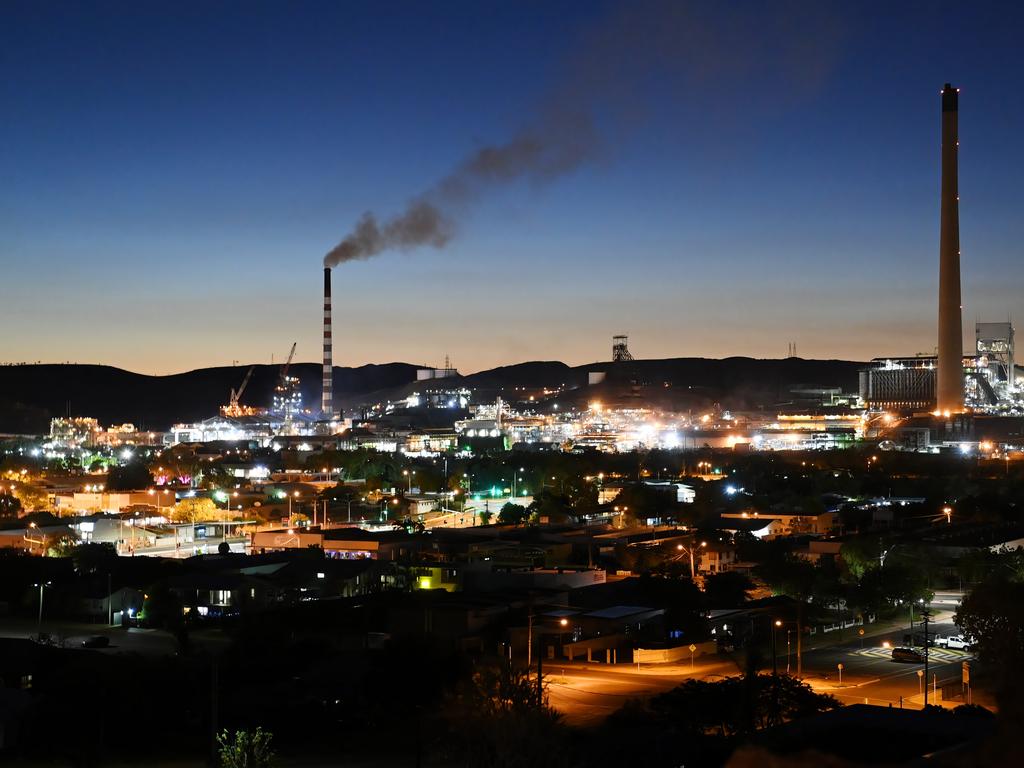Fears the sun is about to set on the mining gem of Mt Isa
Mining giant Glencore will not commit to the future of its $3bn mine in Mount Isa beyond 2027, intensifying uncertainty for an outback community already on tenterhooks.

Mining giant Glencore will not commit to the future of its $3bn mine in Mount Isa beyond 2027, intensifying uncertainty for an outback community already on tenterhooks over new work arrangements at the vast site.
The Swiss-based multinational has told the 3000-strong workforce that those involved in the hot, heavy work of mining copper underground will move to a seven-day-on, seven-day-off roster, stoking fears it was a step toward fly-in, fly-out operations.
Dismayed community leaders said FIFO would devastate one of the last dedicated mining cities in regional Australia, an icon of the industry, speeding an exodus that has driven Mt Isa’s population below 20,000.
City councillor Kim Coghlan, a fourth-generation local descended from a pioneering prospector who helped develop the mine, said a shortage of volunteers had forced cutbacks in children’s sport and community services, puncturing the social fabric.
Glencore “have to do what they gotta do” for the business, said Ms Coghlan, 58.
But there was no doubt in her mind a transition to fly-in, fly-out operations was inevitable – and her children, Gracie, 24, a locally employed administrative officer and mother of six-year-old Gabby, newly graduated nurse Phoebe, 20, and Zoe, 15, would have to live with the consequences. Ultimately, the city could lose school, health and community services, warned Ms Coghlan, stressing this was a personal view, not that of the council.
“We know in the community what’s going to happen. If people have seven days off, some families are going to move away,” she said.
“Those that stay won’t be here nearly as much: they will take off to Townsville for the week off or head up to the Gulf to go fishing. Either way, it’s going to have a big impact on the community and make it much harder to get volunteers involved. We will have to adapt to it – like we always have.“
As Glencore finalised the roster change on Friday, the chief operating officer of its Queensland Metals division, Matt O’Neill, revealed that copper reserves in the 98-year-old mine were heavily depleted. Zinc and lead are also extracted from caverns up to 2km below the surface, so deep they have to be airconditioned on account of the Earth’s 60C temperature.
Mr O’Neill said the copper levels had dropped from about 3 per cent a tonne of ore mined to less than 2 per cent.

The remaining resource was about 30 million tonnes and this was being taken at a rate of about six million tonnes a year, he said, giving the existing copper mine a lifespan of five years.
“At the moment, our current plan extends out to a 2026-27 time frame,” he said. Another 150 million tonnes of ore could be accessed through an open pit or the opening up of additional areas.
But there was no guarantee this would happen. “Could I put my hand on my heart and say here’s the plan for how we are going to go and extract that? No I can’t,” Mr O’Neill told The Weekend Australian. “We have got some concept studies on it, and some of them throw up very curly questions.”
Mt Isa ranks as one of Australia’s great mining centres alongside the remote WA gold town of Kalgoorlie and Broken Hill, the birthplace of BHP in far western NSW. It is also a key service centre for far-flung communities dotted across northwest Queensland and the launching pad to exploit strategic minerals including sought-after rare earth elements in the emergent Northwest Mineral Province.
Uncertainty over the future of the Mt Isa Copper Operation – MICO – belies the strength of demand for its output, branded the “new oil” by Goldman Sachs because of copper’s importance to the new economy as a core component of electric vehicle batteries, mobile phone handsets and semiconductor wiring.
The global merchant bank predicts the copper price will surge 50 per cent to $US15,000 ($21,000) a tonne by 2025.
Mr O’Neill, 47, a Mt Isa local who lives there with his family, insisted the change to the 7-7 roster was proved productivity enhancer, not the gateway to FIFO. It would affect about 600 MICO staff involved directly in underground operations.
“I am happy to say there is no intention to go to a FIFO workforce because it is more expensive to start with and it’s not what the community is set up to do,” he said.
In a statement on Friday, Glencore insisted: “The change will improve work-life balance for our MICO employees in a number of ways, including having every second weekend off. It also allows us to more easily transfer workers between … sites to improve productivity.”
Former Mt Isa mayor and state Labor minister Tony McGrady said the company should be taken at its word that it was not shifting to FIFO.
Echoing Ms Coghlan’s concerns, realtor Kieran Tully said it was difficult enough to attract workers to Mt Isa, 1800km northwest of Brisbane, and the last thing the community needed was anything that stopped people settling there. He was willing to pay up to $33 an hour – amounting to $75,000 a year full-time – for someone to answer the phone in his busy office. School leavers were free to apply.
But Andrew Lawrenson of AWX recruitment, a job placement service with 170 vacancies on the books, said FIFO might be “forced on us” as the only way to attract skilled labour.






To join the conversation, please log in. Don't have an account? Register
Join the conversation, you are commenting as Logout